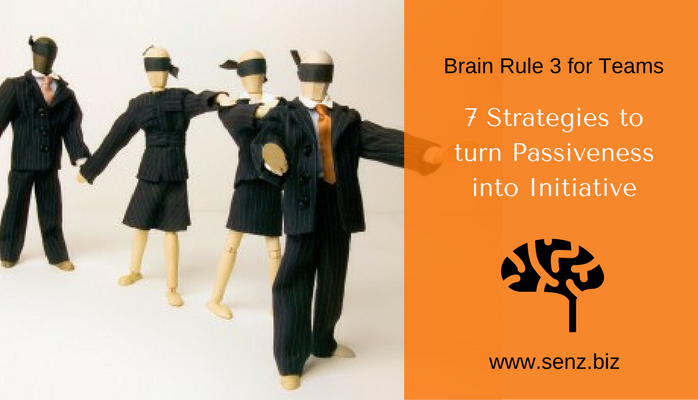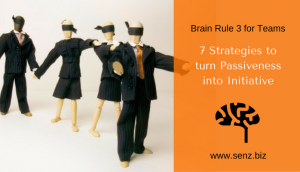- Home /
- motivation
Are Visionary Leaders dying out?

Is visionary leadership for business gurus only? Or can it be for anyone running day-to-day business? Being visionary means creating and conveying an appealing sense of purpose. It is about winning the hearts and minds of your employees. This is something you can learn. In this article you read how.
In summary, this is what visionary leaders do:
Create a shared purpose. You cannot expect your team to be innovative and change if they do not know the direction in which they are headed. It is up to the leader to set the course and give a bearing for the future. You need to make sure that you can paint a clear picture, that it is concise, easy to understand and inspiring. This is the first step to win the hearts of your team.
Make it comfortable for their team to follow the new direction. Change is always uncomfortable. Your brain loves to follow the well known routes. This helps you greatly in daily life. For example, you will immediately pull away your hand when you coincidentally touch something really hot. However, your brain protests when you want to make a change. So, secondly, you need to make it easy for your team to follow your strategy. You need to win their heads, too
Let me share some more details.
4 MUST-DO’S to be a visionary leader
1 KNOW YOUR FACTS AND FIGURES
In order to create a vision, you first need to know where you are now. This means that you need to first gather baseline information. How?
– Talk with people at all levels of your organization. Ask: What do you think our current state is? How are we doing? What do we need?
– Closely observe your day-to-day business to identify what can be improved
– Collect all market insights & trends. What is currently happening in your market? What is the role & behavior of each of the stakeholders (competitors, buyers, influencers, government, etc.)? What about your own company’s role and behavior? What is happening?
– Collect and evaluate all financial information. Look at your performance and productivity markers.
– Take intentional actions to identify patterns and discover new opportunities, like studying other industries and attending events outside of your area of expertise.
Share your findings with your team to check your conclusions and get them engaged.
2 CREATE YOUR PURPOSE

Leaders who gather facts and figures develop a gut sense for critical long-term versus short-lived changes. Together with the answers to the following questions, those insights will assist in imaging what might be possible for your organization.
Consider your market and all players. And ask yourself:
– What is missing in this market? What is not fitting?
– What would you like to change, solve or complement?
– How can you solve the problems of your target group?
Once you have a basic vision, test it out on others. Ask early adopters and criticasters: ‘what could possibly go wrong with this thinking? What haven’t I thought about?’
Using this strategy, you can test out your vision and identify potential challenges while taking early strides toward gaining supporters.
3 COMMUNICATE WITH ENERGY AND COURAGE
If you want to inspire people to innovate, to change the way they do things and to achieve extraordinary results then you have to be passionate; passionate about what you believe in. You have to communicate that passion every time you speak.
The active support and participation of others can greatly accelerate your vision, while the lack of support can make even the best ideas irrelevant.
Focus on the things that you want to change, the most important challenges you face and be passionate about overcoming them. Your energy and drive will translate itself into direction and inspiration for your people.
4 PERSONIFY YOUR VISION.

Once your team is on board with (and fully understands) your vision and the steps necessary to get there, you must live everyday with intent to personify your vision.
Everything you do, even little things, should be done with the intent to execute your vision. In other words, BE the vision you want to see. This will significantly impact how your team works. They will begin to work with intent, too.
Along with practicing what you preach, it’s important to be an inspirer for your employees.
Want to learn more about how to establish this in your organization? Book a free strategy session.
By using the skills above, you can become a visionary leader.
Visionary leaders are the best to be and have because they can see the result long before it happens.
With visionary greetings,
Karin van Zuilen
Senz – innovation & change management, www.senz.biz
p.s. Want more strategies to improve your team performance? Click here to get access to the 5 steps to improve your team performance
5 essential factors to get your team into action

Brain Rule 4 for Teams – to make your team follow you
We do not trust our boss! In the corridor employees are complaining: ‘The direction of the company is not clear’, ‘we don’t believe what our manager says.’ Or ‘beautiful plans to build the brand, but the reality is very different.’ It may frustrate you that your employees don’t get it and don’t take the required action. Apply brain rule 4 to make your team trust and follow you.
The problem may be that a consistent message, that touches them, is missing. People need clarity and guidance. Probably, you remember the feeling that something is not right, if somebody tells you a lie. The first thing that happens is that your brain warns you that you are in danger. It starts producing a strain of counter-arguments.
Safety is one of the core needs. If insecurity and danger and therefore anxiety arise, this leads to action; but not in the right way. It leads to either fight or flight. Fight in this case means: working harder, or show that you are more important than others; and internal competition. Flight means: if they don’t see or hear me, nothing will happen. I just do my own thing and do not show myself.
Internal conflicts, stress and slowdown are the result. This unproductive process is going on in many companies. So, how can you deal with this as a leader?
Consistent messages that create a feeling of safety, inspire teams (and clients) to follow you. Subconscious counter-productive mechanisms in your brain will be over-ruled. Some leaders happen to be the ones that are followed by many people. They inspire their environment, so many team members feel the drive to perform. You can also make this happen!
Brain Rule 4 says: Establish a Safe Setting
This is important for clients, as well as for employees.
Read the 10 easy ways to make clients trust you and increase your credibility (and revenues).
These are the 5 essential factors how you can make your team trust you, and get into action.
1. Be the living example of your message! A big desire of employees is to have a role model, somebody to identify themselves with. However, if they receive different conflicting signals, people will get confused. Like in a company where the CEO told his team that customer orientation needs to be improved. Every day, he parked his car at the place for… clients! So, do what you pray!
2. Be consistent yourself; match your feeling, thinking and behavior. I remember a meeting where a manager jumped up with a red face and started to defend his point of view. One of the team members noticed: you seem to be very angry at us. He shouted: I am not angry. With denying your feelings, you may seem a rational leader, but you actually betray yourself; and others.
Other people immediately notice what is going on. This is due to your mirror-neurons in your brain. These are nerve-cells that notice and mirror the emotional state of mind of others. This means that your team members will immediately feel what you feel. So, realize what you really feel and think while you are sending a message. And be honest: do they match with each other?
3. Let your heart speak! This has an amazing effect! Without feeling, no passion. Without passion, no action. Managers need awareness of their own feelings as a precondition for effective leadership. This way, they will be perceived as authentic and trustworthy.
4. Listen to your team members. Recognition creates a safe environment and takes away 50% of all problems.
5. Send at least 7 consistent messages about the same topic (of course in a slightly different way). You may know that you need this to help prospects take action. However, the same is valid within your organization. You will immediately notice the effect.
Implement brain rule 4 and establish a safe setting for your team by speaking and acting from your heart. This makes them follow you and take action.
Do you know more ways? Share them in the comments.
With trustworthy greetings,
Karin
Senz – brand positioning & client attraction, www.senz.biz
p.s. Want more strategies to build a leading market position in the healthcare or services market? Click here to get access to our FREE resources with the newest marketing strategies and Senz & Brain Tips
7 strategies to turn negativity & passiveness into initiative


Brain Rule 3 for teams: to Increase the Initiative in your Team
Your employees are complaining that there is a lack of direction. They don’t feel motivated anymore.
Especially now, it’s important that they take initiative and do a better job than ever before.
Brain Rule 3 helps you get the initiative back in your team and increase the productivity.
As a leader you feel that your strategy is clear and you don’t understand why your employees don’t get it. Sales are lacking behind and something needs to happen. Otherwise, it is even necessary to start a re-organization and dismiss people.
You have tried a lot: you spoke with them, gave them clear assignments and maybe even a training. However, nothing really changed.
What is going on?
-Your employees really don’t know the direction. Leaders think that everybody knows it, but this is NOT the case. Research (CIPD) showed that out of 2000 employees only 29% knew the values and strategies of their company.
-It could well be that your team feels that the management goes into a direction they do not want to identify with
-Or maybe some of your team members know that they are nominated to be dismissed
-Or they feel that they are not valued anyhow
In all cases, this means that the connection between your employees and the company is lost. They do not feel that they belong to the company anymore (although they are employed).
You are not meeting one of the strongest forces in universe: ‘social belonging’. The importance of belonging to a group is not always immediately recognized. However, it has disastrous consequences for a company if this aspect is lacking. Our mental system is programmed to belong to a group. If this does not happen, our brain sends signals that feel like a punishment.
This leads to negativity, passivity, feelings of burn-out and demotivation. The loyalty to the company will drop with a negative impact on sick leave, employee turnover and productivity.
This can last for months and even years. No wonder that the clients feel this; with a negative effect on the bottom-line.
So, how can you get all noses into the same direction?
How can you make everybody feel responsible and take action?
How can you turn negativity & passiveness into initiative?
Restore the connection and make use of:
Brain Rule 3 for teams: create a sense of belonging
This is a proven recipe
Click here if you want to know how you can use brain rule 3 for clients.
7 strategies for leaders to turn negativity & passiveness into initiative:
1. Make clear what you stand for and what is your strategy
Communicate this message consistently and show it in actions. In the end, nobody wants to stay behind.
2. Be even clearer about what you expect of your employees.
Tell them what their added value is. Even in a period of re-organisation.
3. Create an enthusiastic (and big enough) group of pioneers, if you want to introduce new strategies.
Others will follow.
4. Mention the commonalities in your team and make clear where you are different than others.
People always prefer their own group above others.
5. Make clear to what group they belong if they take the wished actions.
Make also clear that you are also part of the group and lead by example.
6. Set concrete short-term objectives, so everybody can immediately notice the effect.
This way, you are positively influencing the intrinsic motivation, satisfaction and output. This does not work with abstract objectives that are too far away.
7. Give regular feed-back about the progress that has been made.
This way, people function in the best way (Amabile, Harvard University).
Do you know more strategies? Share them in the comments.
If you implement brain rule 3 in your team, you will immediately notice the impact on the productivity, teamwork and motivation. If this is lacking, this will lead to loads of stress, dissatisfaction and demotivation.
With connecting greetings,
Karin
p.s. Want more strategies to build a leading market position? Click here to get access to our FREE resources with the newest marketing strategies and Senz & Brain Tips











